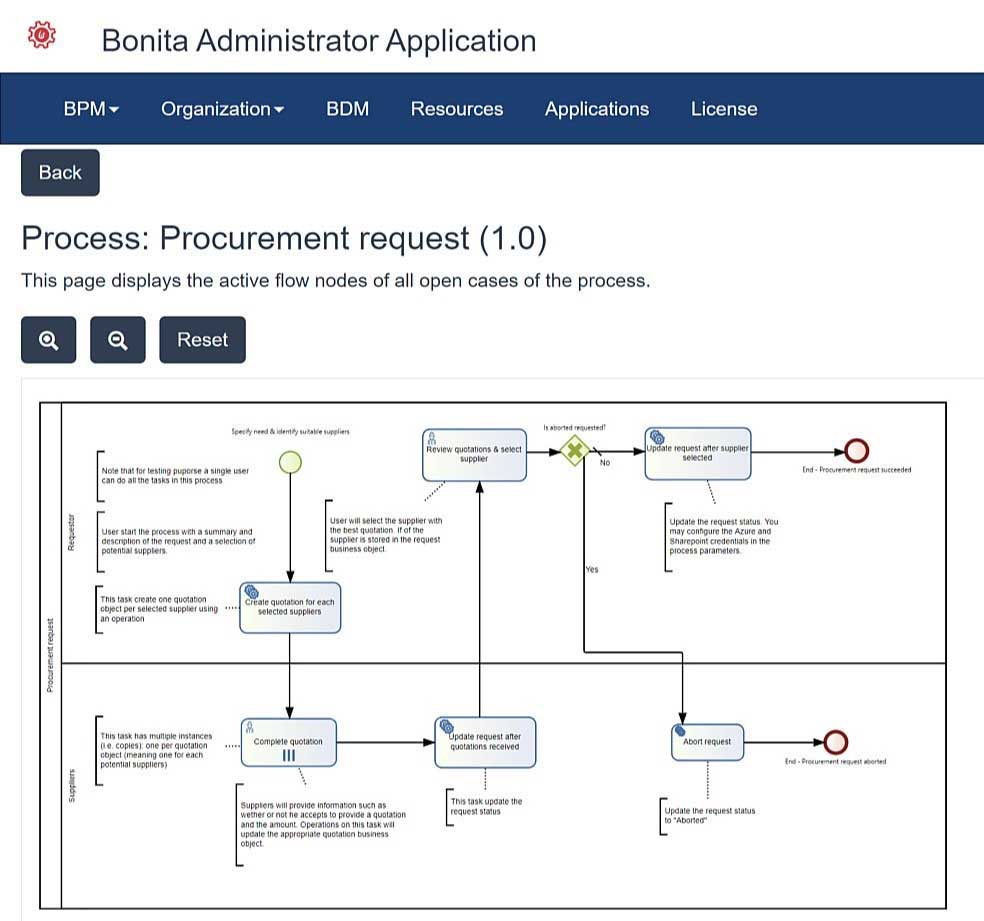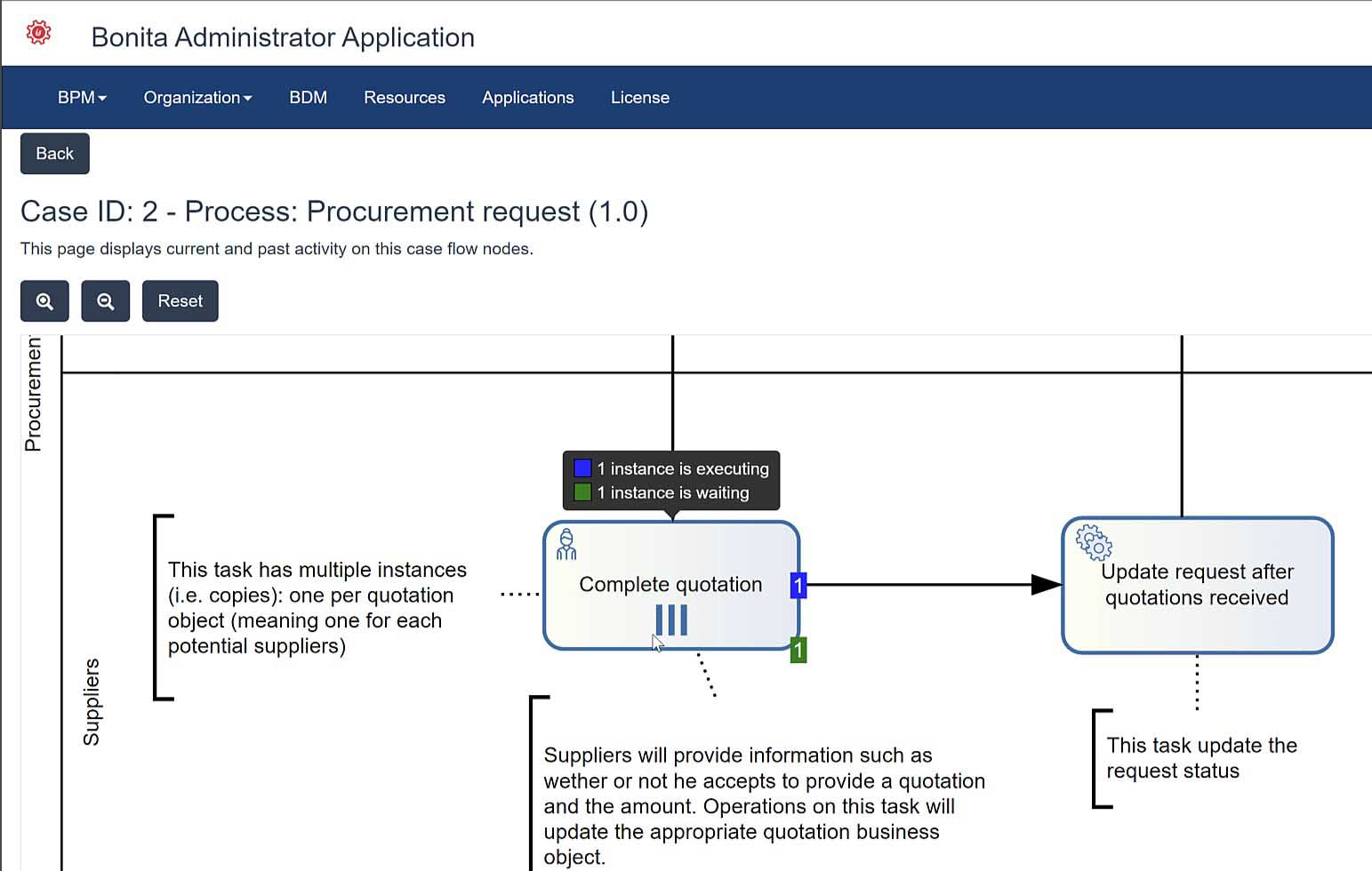Bonitasoft Adds Deep Visualization, Monitoring To Its Digital Process Automation Platform
Bonitasoft is adding rich visualization, monitoring and reporting tools to let users get a deeper sense understanding of their processes -- and improve them as needed. IDN speaks with CEO Charles Souillard.
by Vance McCarthy
Tags: analytics, automation, Bonitasoft, monitoring, process apps, visualization,

CEO

"With these tools, users can now better customize their visualization of processes and cases for a deeper understanding of how processes are performing as they run."
 Integration Powers Digital Transformation for APIs, Apps, Data & Cloud
Integration Powers Digital Transformation for APIs, Apps, Data & CloudThis month, Bonitasoft continues to enrich its Bonita 2022 digital process automation platform. The latest update, Bonita 2022.2 offers developers a rich set of visualization, monitoring and reporting tools.
In addition, Bonita 2022.2 also adds native integration with tools produced by the open source Process Analytics project.
“With these tools, users can now better customize their visualization of processes and cases for improved process monitoring that will give businesses a deeper understanding of how processes are performing as they run,” according to Bonitasoft CEO Charles Souillard.
Bonita2022.2 builds on an earlier update to the Bonita 2022 platform release, which added automation and technologies to make it easier for developers to test, deploy and deliver process apps.
The Bonita 2022 digital process automation platform is designed to be easy to use, and fully open and extensible to modern process apps.
It uses the BPMN 2.0 standard (Business Process Management). It offers both a low-code, visual programming interface alongside high-code tools and frameworks for experienced developers to enable custom extensions and customized applications. Further, the use of open code and a rich set of connector technologies, allows the Bonita platform to integrate with multiple environments and platforms.
At a high level, Bonita 2022.2’s rich support for BPMN and additional visibility and monitoring features provides developers access to a new and efficient way to tap into a virtuous app lifecycle for process apps.

IDN spoke directly with Bonitasoft CEO Charles Souillard to explore these ideas.
To begin, IDN asked him about user benefits he expects from Bonitasoft’s latest support for visibility:
The new focus in the current release of Bonita 2022.2 is on monitoring, case visualization, and process visualization. The new capabilities that we’ve integrated into the platform are intended to be used to better manage projects and applications in production.
Bonita 2022.2. . has been reshaped using the bpmn-visualization libraries from the Process Analytics project. The major value is that users can now customize their process and case visualizations. This component is also fully reusable to be embedded in other Bonita applications.
By analyzing the paths followed by executed processes, either in real time or after they are done, you can manage errors, and also unlock some process instances that weren’t easily visible before. Furthermore, you can make a second deeper analysis to identify which paths have actually been followed in cases, and use this information to make improvements to the process design.
This represents the first steps to better process monitoring. We are already working on new capabilities. In the past, as you may remember, we did a lot of experimentation around predictive analytics (formerly called BICI). Through that research, we developed some useful algorithms related to AI and predictions, and we plan to reintroduce that work in future capabilities to offer platform users additional power on what we call “Process Intelligence.”
This will combine advanced user interface-based analytics with other analytics. We’re sticking with our mission to offer humans a better understanding of what is happening, but letting them, not the AI, choose the best improvements to make.
Souillard also pointed out that internal developers and partners can both benefit from Bonita 2022.2’ approach:
For in-house developers and designers, we see a value in that they can integrate the Process Analytics’ bpmn-visualization library in any application of their choice where they want a visual representation of a process execution, Bonita or not. For in-house developers using the Bonita platform for automation project development, they can deeply customize the widget and then reuse it over all their Bonita applications.
Our customers and partners benefit from the pre-built integration we have done of the bpmn-visualization library directly into Bonita, so they can focus their time and energy on customizing the User Interface component to their unique needs. They too can use the library to represent, both in Bonita and other applications, actual process executions in the same way to homogenize their presentation, making the visual scan of different systems more human-friendly.
The current release of Bonita 2022.2 also adds new a Reporting Application feature for process execution reports. These are complete with relevant historical data of processes and cases, to provide rich data to help with analysis of past process performance to enable betterpinpointing areas for improvement.

Bonitasoft Continues To Support Open Source Projects, Models
Aside from technology features, Souillard also highlighted another dimension of Bonitasoft’s latest update -- its continued support for open source.
The Process Analytics project is an open source project, distributed under the Apache license, that is developing tools to help developers to visualize and monitor process execution data using the BPMN2 standard notation.
The Process Analytics project was kicked off from the very beginning as an independent, open source project. For example, the governance was defined on day 1 as a true open source governance. This means that the official roadmap for Bonita does not define its next priorities. Bonitasoft is one user among others, and the developers in charge of the project have full power to organize priorities, according to Souillard.
After two years of development, he said the Process Analytics project is now advanced enough to offer a set of re-usable, “embeddable” libraries that can be easily integrated into other existing BPM, RPA, iPaaS, and process mining applications and platforms.
Specially noteworthy, these embeddable libraries are available to any process app developer -- even those using a non-Bonitasoft platform, he added.
“Consistent with our open source commitment, we made a strong choice to make the Process Analytics project output Apache licensed, and really embeddable by developers into any new or existing application - including by other BPM vendors,” Souillard told IDN. “This is a way for providers in those areas to deliver more value to their customers, more quickly.”
Recently, extra actions have been taken to respect that and to remain consistent with “open source, Souillard said, including:
- The source code is hosted on GitHub
- Public communication via Medium
- And via Twitter
- Documentation and user guide
- How to contribute
- Process Analytics and Hacktoberfest - now for a third year
The Bonita Community open-source edition includes all capabilities required to develop and deploy process automation projects, and can be downloaded here.
This month, Bonitasoft also announces that it has achieved ISO 27001 certification for its Bonita Cloud development, user support, and operations. 27001 certification was confirmed by Bureau Veritas after a successful audit of Bonitasoft’s information security practices.
Related:
- InfluxData's Latest Updates Optimize Time Series Data for Better Performance, Scale and Management
- Actian Zen 16.0 Update Simplifies Delivery and Boosts Performance of Edge, IoT Apps
- Virtana Infrastructure Performance Management Adds AI-driven Capacity Planning
- e2open’s Supply Chain SaaS Updates Help Firms Reduce Operational Risks with Deeper Visibility
- Report: Endor Labs Identifies 2023 Operational, Security Risks To Open Source
All rights reserved © 2025 Enterprise Integration News, Inc.


